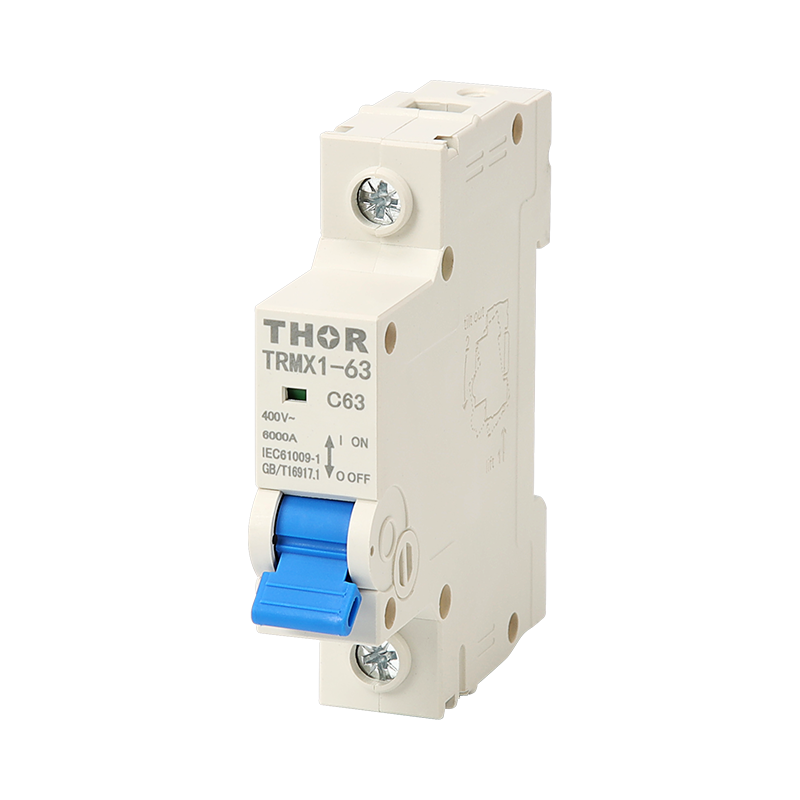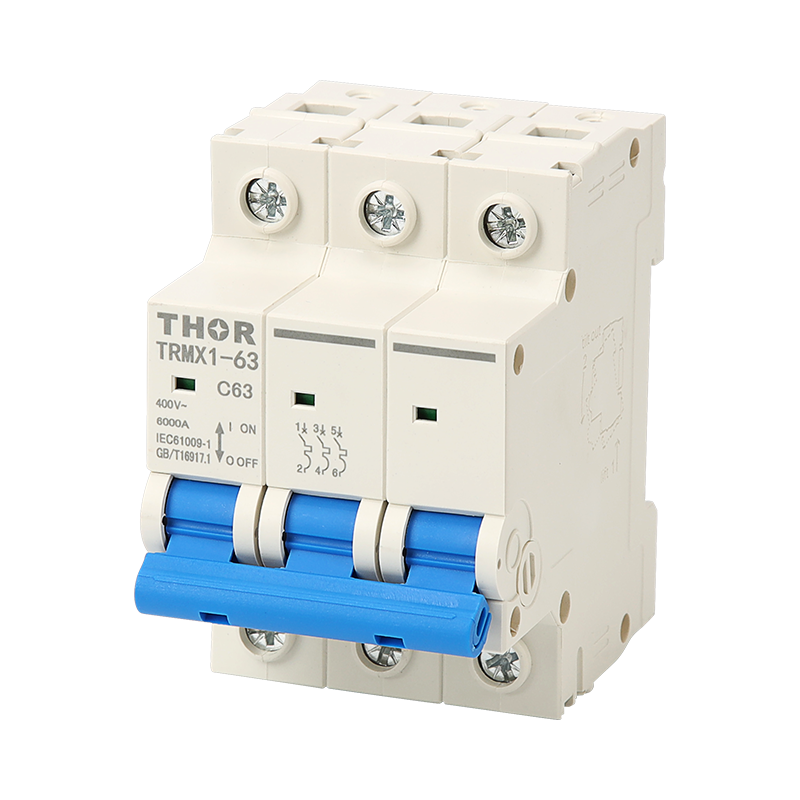What is AC MCB?
AC MCBs are devices specifically designed for circuits that operate on alternating current.
A notable characteristic of alternating current is its zero-crossing nature, where the voltage waveform regularly crosses zero volts.
This occurs twice in each cycle of the AC waveform, facilitating the disconnection process and simplifying the operation of AC MCBs.
The primary purpose of an AC MCB is to protect electrical circuits from overcurrent conditions, such as overloads or short circuits.
These breakers automatically disconnect the circuit when they detect such faults, thereby preventing damage to both the circuit and connected devices. The tripping current in an AC MCB can be set as either fixed or adjustable.
AC MCBs come in various designs, with the type B thermal-magnetic breaker being the most common. This type utilizes a bimetallic strip and a magnetic coil to sense overcurrents effectively.
Since the current in AC circuits is constantly changing, the design of AC MCBs must account for these fluctuations.
These safety devices are essential in residential, commercial, and industrial settings, ensuring that electrical systems operate safely.
In typical power grids, alternating current operates at a frequency of 60 Hz, meaning the voltage alternates between positive and negative values 60 times per second.
At these moments when the voltage reaches zero, the AC MCB disconnects the circuit to extinguish any arcs and protect wiring from excessive currents.
There are numerous types of AC MCBs available on the market, and selecting the appropriate one depends on the specific application and environment.

Alternating Current
Alternating current (AC) is characterized by its ability to change both its magnitude and direction at consistent time intervals.
Unlike direct current (DC), which flows steadily in one direction, AC reverses its flow repeatedly.
In AC, the movement of electrons oscillates back and forth in cycles.
This type of current is what powers electrical lines and is the standard form of electricity supplied to homes through wall outlets.
Can AC MCB be used for DC?
No, AC miniature circuit breakers (MCBs) are specifically designed for alternating current systems and should not be used in direct current applications.
Utilizing an AC MCB in a DC circuit can pose safety risks and lead to the malfunction of the circuit protection device.
The primary reason for this incompatibility is that AC circuit breakers are engineered to manage the alternating nature of AC current, which frequently crosses zero volts.
This characteristic allows the breaker to extinguish arcs effectively during fault interruptions.
In contrast, direct current flows continuously in one direction and does not cross zero, resulting in longer-lasting arcs that are more challenging to extinguish.
As a result, employing AC MCBs in DC circuits may lead to ineffective interruption of faults, risking damage to the breaker or the entire electrical system, potentially even causing fire hazards.
It is crucial to select the appropriate type of circuit breaker designed for the specific current type to ensure safe and reliable operation.

AC MCB Key Features
- Overcurrent Protection: Ensures reliable defense against overloads and short circuits, safeguarding electrical circuits.
- Quick Response: Features a rapid tripping mechanism that disconnects the circuit swiftly during fault conditions, minimizing potential damage and enhancing safety.
- Compact Design: The space-efficient design allows for easy integration into standard distribution boards, optimizing space utilization.
- High Breaking Capacity: Capable of interrupting significant fault currents, offering robust protection across various electrical systems.
- Wide Range of Ratings: Available in multiple current ratings to accommodate diverse applications and load requirements.
- Durable Construction: Crafted from high-quality materials to guarantee long-lasting durability and dependable performance.
- Easy Installation: Designed for DIN rail mounting, facilitating straightforward and secure installation within distribution boards.
- Thermal and Magnetic Tripping: Employs a dual tripping mechanism—thermal for overload situations and magnetic for short circuits—ensuring comprehensive protection.
AC MCB Applications
- Residential: Provides protection for household electrical circuits, ensuring occupant safety and preventing damage to appliances.
- Commercial: Utilized in commercial buildings to protect electrical installations and equipment from overcurrent situations.
- Industrial: Designed for industrial settings, safeguarding machinery and equipment against overloads and short circuits.
- Public Buildings: Enhances electrical safety in public facilities such as libraries, museums, and government offices.
- Healthcare: Ensures the safety of sensitive medical devices by offering reliable overcurrent protection.
- Educational Institutions: Protects electrical systems in schools and universities, contributing to a safe learning environment.
